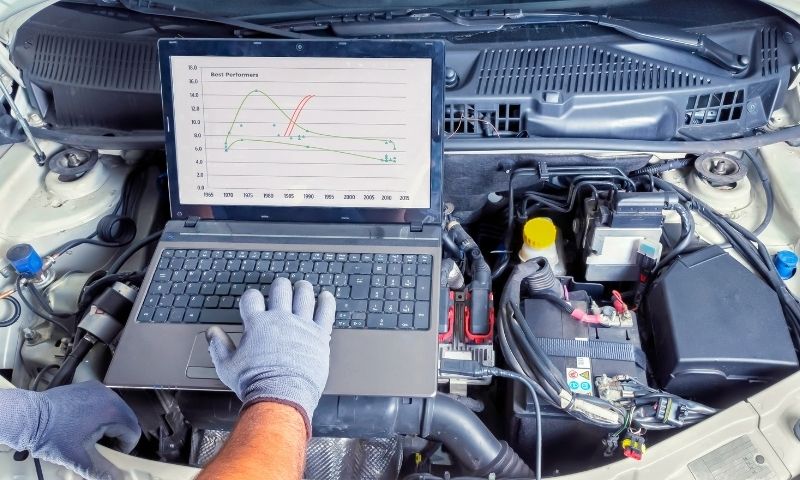A Leading Resource Built By Automotive Lovers, For Automotive Lovers.
We’ve helped consumers around the world make their purchasing decisions.
Latest Articles
The 18650 rechargeable battery has a maximum output current of 7A. It delivers up to 19W of output power. The nominal output voltage is 3.7V, reaching a peak of about… The output energy of a battery is found by multiplying its voltage by its capacity in amp-hours. For example, a battery rated at 3.7 volts and 2.5 amp-hours has an… The outer shell of a lithium-ion battery, called the casing or housing, protects the internal components. It has a battery enclosure that can be made of cold-rolled steel or polymer…. The nominal output voltage of a 18650 battery is usually between 3.6V and 3.7V. This average voltage occurs during its discharge cycle. These lithium-ion batteries are popular in electronics, electric… The battery capacity of iPhone models varies. The iPhone 15 Pro Max has 4,422 mAh, the Pro has 3,274 mAh, and the Plus has 3,491 mAh. Apple claims these batteries… The standard 2-pin connector for LiPo batteries is typically the JST-PH connector. Other common options are the Molex Picoblade and Micro JST connectors. These connectors ensure a stable connection for… The normal low voltage cut-off (LVC) for a 12V battery is usually set at 10.5V. This setting helps prevent damage by stopping the battery from discharging too much. To improve… The Nissan warranty on the battery lasts for 36 months or 36,000 miles, whichever comes first. If the original battery is defective within the first 12 months or 36,000 miles,… The nominal voltage of a 24V lithium battery is usually 25.6V. When fully charged, it can reach 29.2V. This setup reduces current demand for the same power output. It also… Lithium is the new metal in battery technology. Lithium metal anodes provide higher energy density than carbon or silicon anodes in lithium-ion batteries. This increase allows for better energy storage… A new battery technology called Graphene batteries is being developed by Graphenano. These batteries offer a range of 500 miles and can recharge in minutes. They charge and discharge 33… The Verizon FiOS Battery Backup (model DBH36D12V) has a 12-volt battery that provides up to 8 hours of backup power. It keeps voice services active, including calls to 911, during… A nickel-cadmium (Ni-Cd) battery is an alkaline battery. The negative electrode consists of porous cadmium. This design allows for an efficient electrochemical reaction. As a result, it supports effective energy… The Innokin Trine battery features EcoDrain technology. This innovation enables users to safely discharge batteries before disposal. It enhances safety and encourages environmentally friendly practices by minimizing battery waste. The… The Mobius battery control board is a 3S Battery Management System (BMS) for 18650 cells. It monitors battery health in real-time. This BMS ensures safe charging and discharge, reduces low… The Dewalt DCB606 is a FLEXVOLT convertible battery pack. It automatically changes voltage between 20V MAX (6.0 Ah) for regular tools and 60V or 120V MAX for high-demand tools. This… The minimum voltage reading for a Prius auxiliary battery is 12.4 volts. If the voltage drops below this, the battery needs a charge. A reading under 12.2 volts signals the… A 1.5V battery works well until its voltage drops below a minimum threshold. For non-rechargeable 1.5V batteries, this cutoff voltage is usually between 1.0 and 1.2 volts. When the voltage… The metal that typically houses a hearing aid battery is zinc, particularly in zinc-air batteries. These batteries generate power through zinc oxidation with oxygen from the air. Zinc is non-toxic… The minimum battery voltage is 12.0 volts. At this voltage, the battery is fully discharged or ‘flat’. Recharge it quickly. Staying at this voltage for extended periods can shorten its… The membrane of a lithium-ion battery is essential for separating the anode and cathode. It permits lithium ions to move while blocking electron flow. Common types include solid state electrolytes,… A battery terminal connector, specifically a crimp style connector, connects batteries to electrical systems. It provides a secure and reliable connection to devices and critical components. This connector enables efficient… Recycling batteries means reprocessing used batteries to reclaim valuable materials and safely handle hazardous materials. This process reduces waste, prevents pollution, and supports sustainable practices. Recycling batteries is essential for… A lithium-ion battery is a rechargeable battery used in devices like mobile phones, laptops, and electric vehicles. It contains lithium-ion cells and a protective circuit. This battery is popular due… Sedimentation in a lead acid battery means the buildup of lead sulphate at the bottom of the cell. This happens when the battery is over-discharged. The lead sulphate expands and… A battery backup is a system that provides an alternative power supply. It automatically switches from the main power source to a battery during a power failure. This solution ensures… Battery calibration means resetting a device’s battery management system. This process involves fully charging and discharging devices like smartphones and laptops. It ensures the displayed battery percentage accurately shows the… The maximum voltage of a 14-volt lead-acid battery during charging is about 14.4 volts. When fully charged, the resting voltage usually falls to around 12.7 volts. These voltages can change… The maximum voltage of a 12V battery pack depends on the type. For lead-acid batteries, it is 14.7 volts. When continuously charging, it is 13.8 volts. Lithium Iron Phosphate (LFP)… The maximum battery capacity for the Samsung Galaxy J7 (model SM-J737P) is 3300 milliamp hours (mAh). It features a lithium-ion battery, known for its efficiency and reliability. This capacity supports…18650 Battery Output Current: Understanding Amps, Discharge Rates, and Capacity
Battery Output Energy: Understanding Capacity, Power, and How It Works
Outer Shell of a Lithium-Ion Battery: Structure, Functionality, and Role Explained
18650 Battery Output: Understanding Voltage, Amps, and Max Discharge Current
iPhone Battery Capacity: What is the Number of mAh and Performance Insights?
Understanding the Normal 2 Pin Connector for LiPo Battery: Types, Sizes, and More
12V Battery: What is the Normal Low Voltage, Safe Levels, and Battery Types
Nissan Battery Warranty: Coverage, Service Options, and Care Tips
24V Lithium Battery: What is the Nominal Voltage? A Comprehensive Guide to Specifications
New Metal for Battery Technology: Breakthrough Innovations in Energy Storage
New Battery Technology: What Is Coming to Revolutionize Energy Storage?
New Fios Battery Backup: Features, Benefits, and Customer Support Information
Nickel Oxide-Cadmium Battery: What Is the Negative Electrode and Its Components?
New Battery Technology: Discover Innokin’s Eco-Friendly Trine System with Recyclable Batteries
Mobius Battery Control Board: Role in Power Management and Battery Innovation
DEWALT Convertible Battery Pack: Name, Features, and Benefits of FLEXVOLT Technology
Minimum Voltage Reading on Prius Auxiliary Battery: Key Levels for Maintenance and Health
1.5V Battery: Understanding Minimum Working Voltage and Essential Guidelines
What Metal Houses a Hearing Aid Battery? Key Types and Important Information
Minimum Battery Voltage: What You Need to Start Your Car and Ensure Optimal Performance
Lithium-Ion Battery Membrane: Functions, Innovations, and Advances in Technology
Battery Connectors: What is the Metal Connector for Battery Called? Terminals & Clamps Explained
Recycle Battery Icon: What It Means and Its Importance for the Environment
Lithium-Ion Battery: Meaning, Functionality, Applications, and Technology Overview
Sedimentation in Lead Acid Batteries: Meaning, Causes, and Effective Prevention
Battery Backup: Understanding Its Meaning, Key Features, and Benefits Explained
Battery Calibration: What It Means, Benefits, and How to Do It Right
What is the Maximum Voltage of a 14 Volt Battery? Charging Limits and Types Explained
12V Battery Pack: What is the Maximum Voltage and Charging Limits Explained
Maximum Battery Capacity for SM-J737P: Explore 3520mAh Options for Long Life



